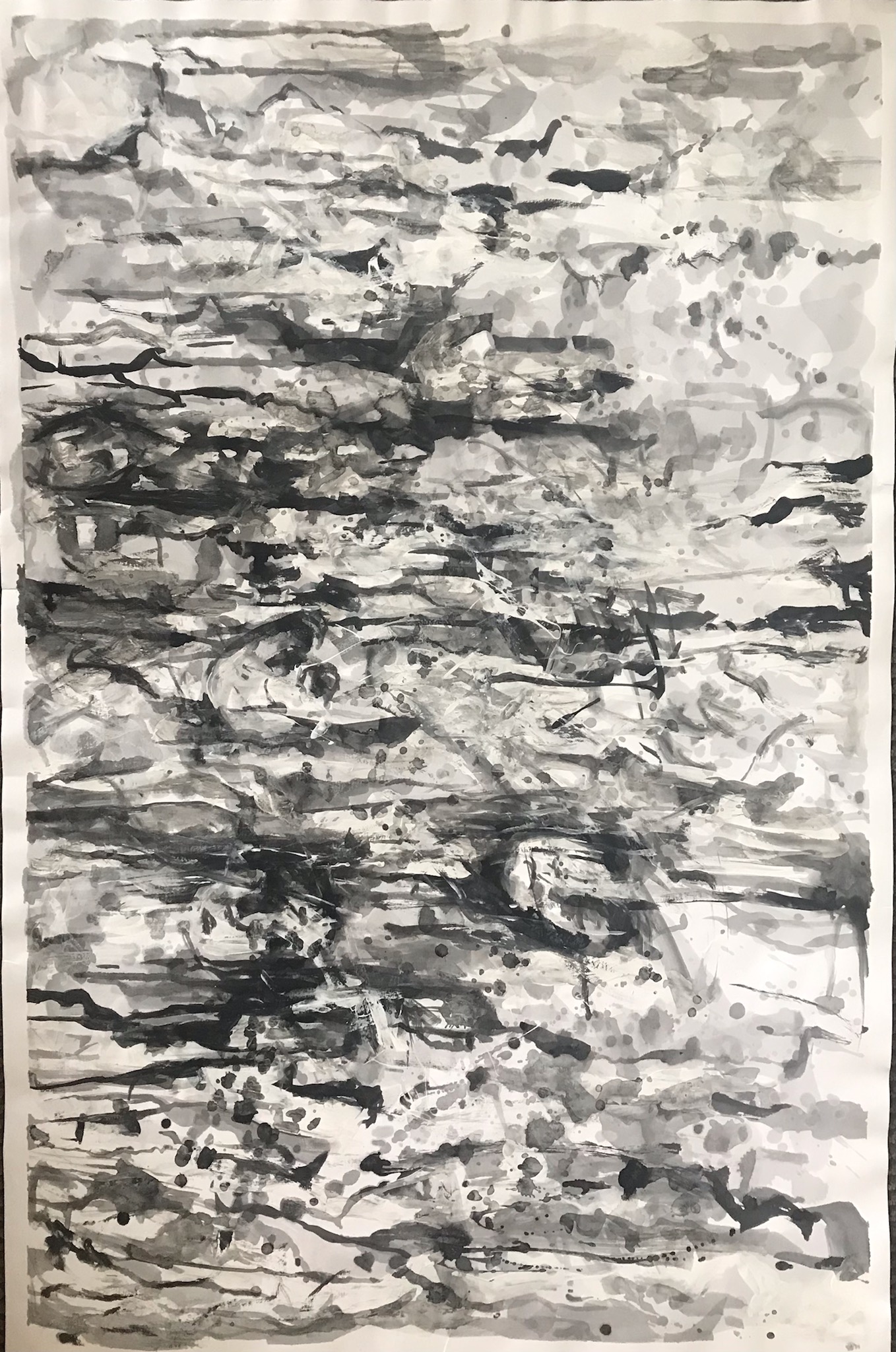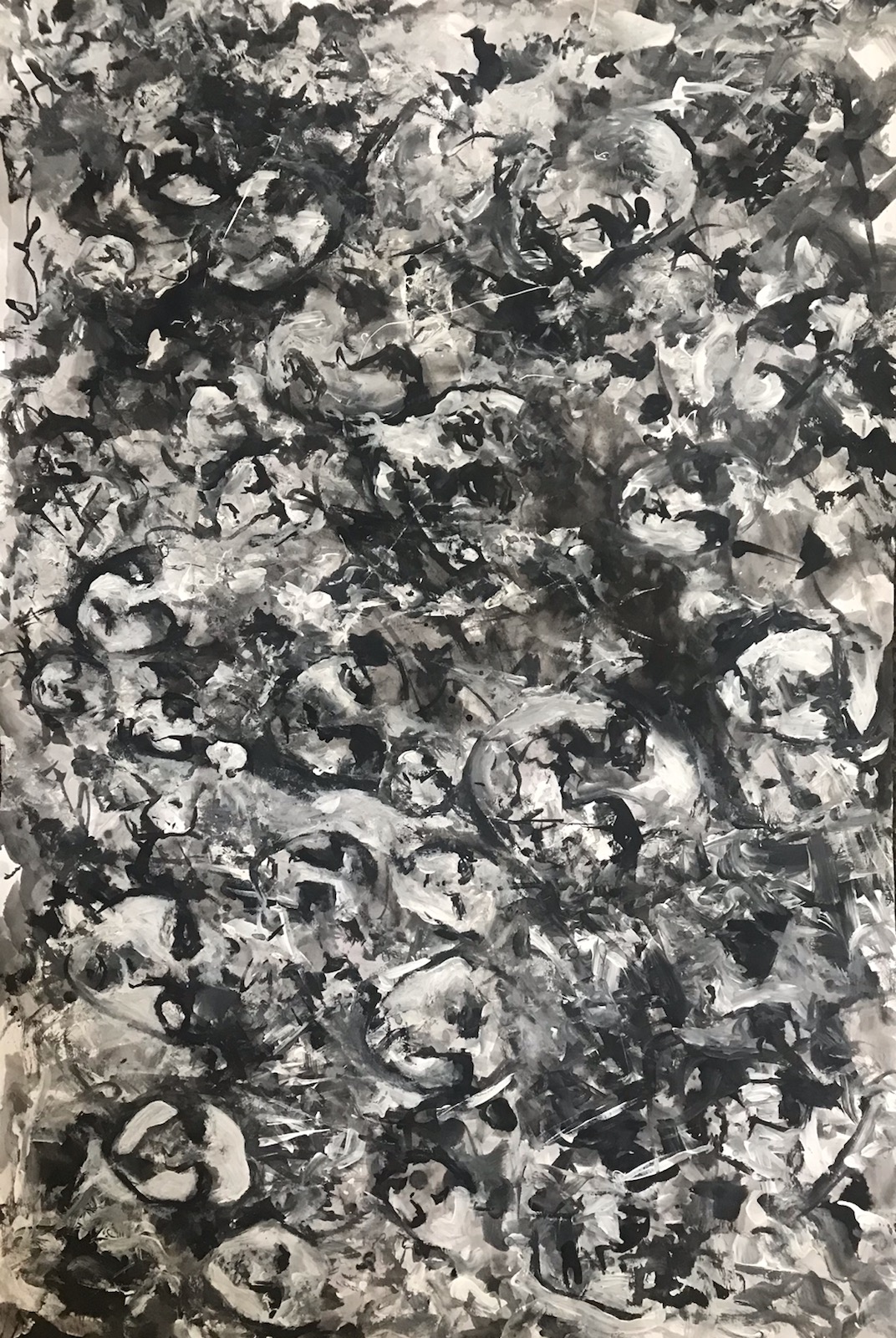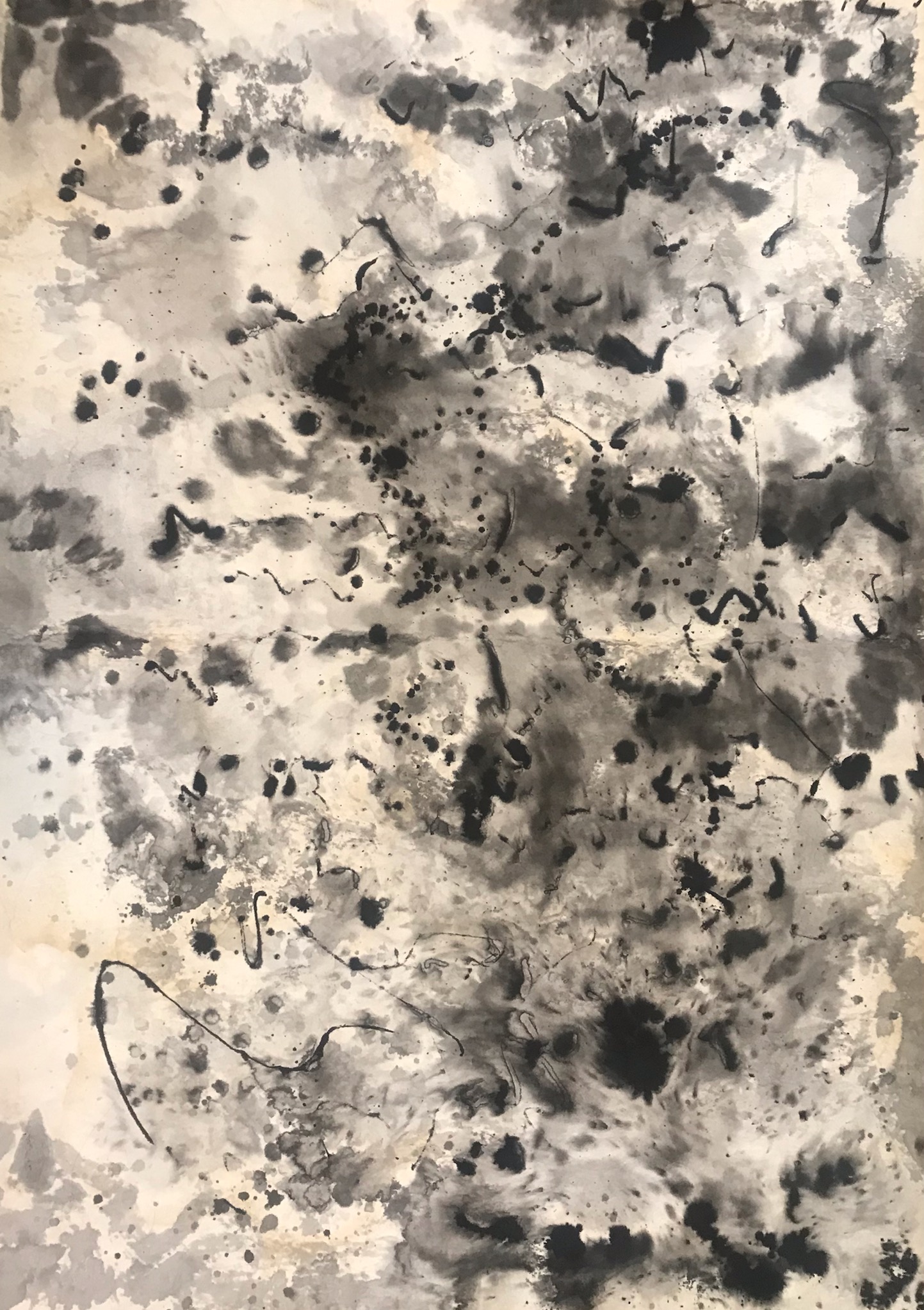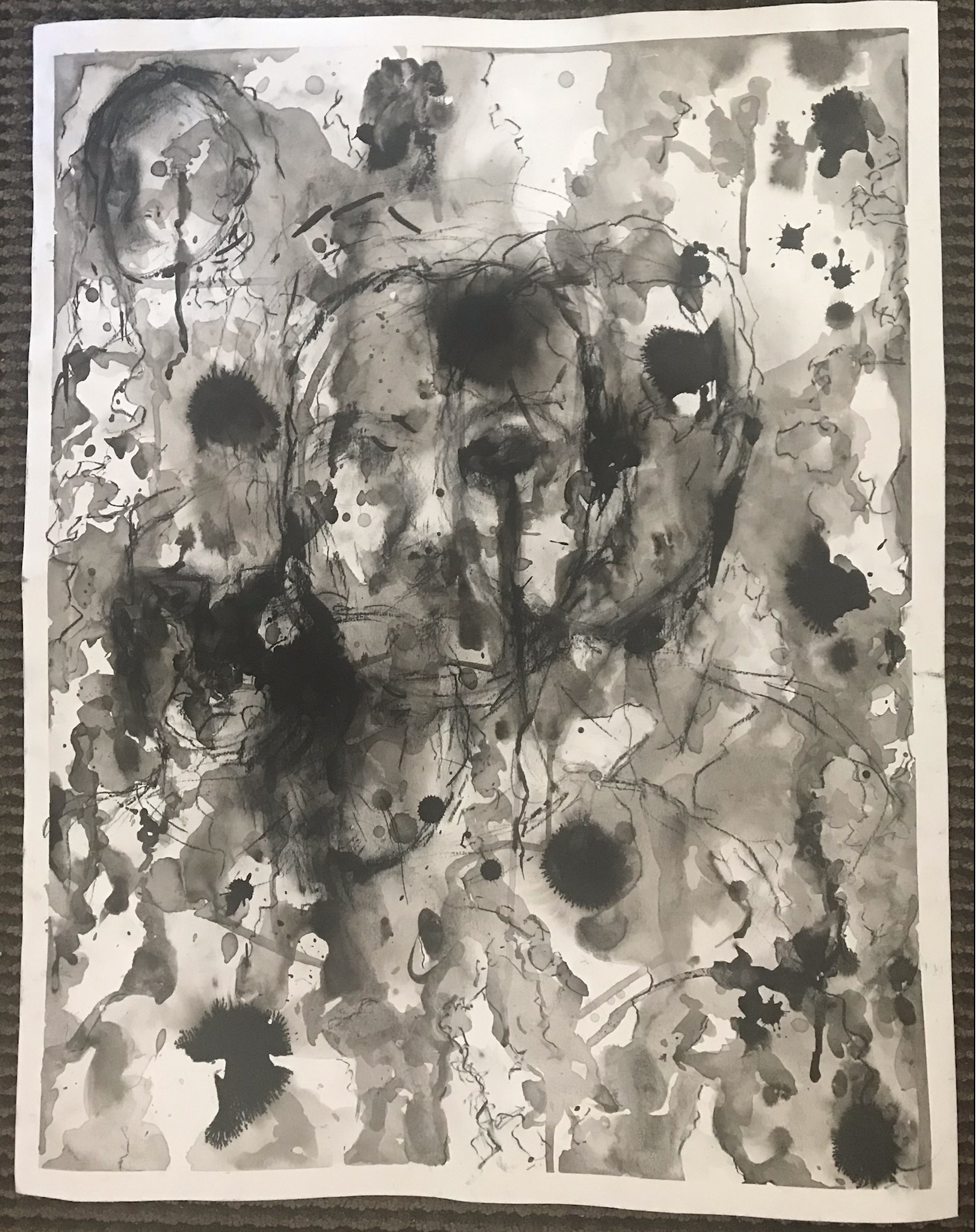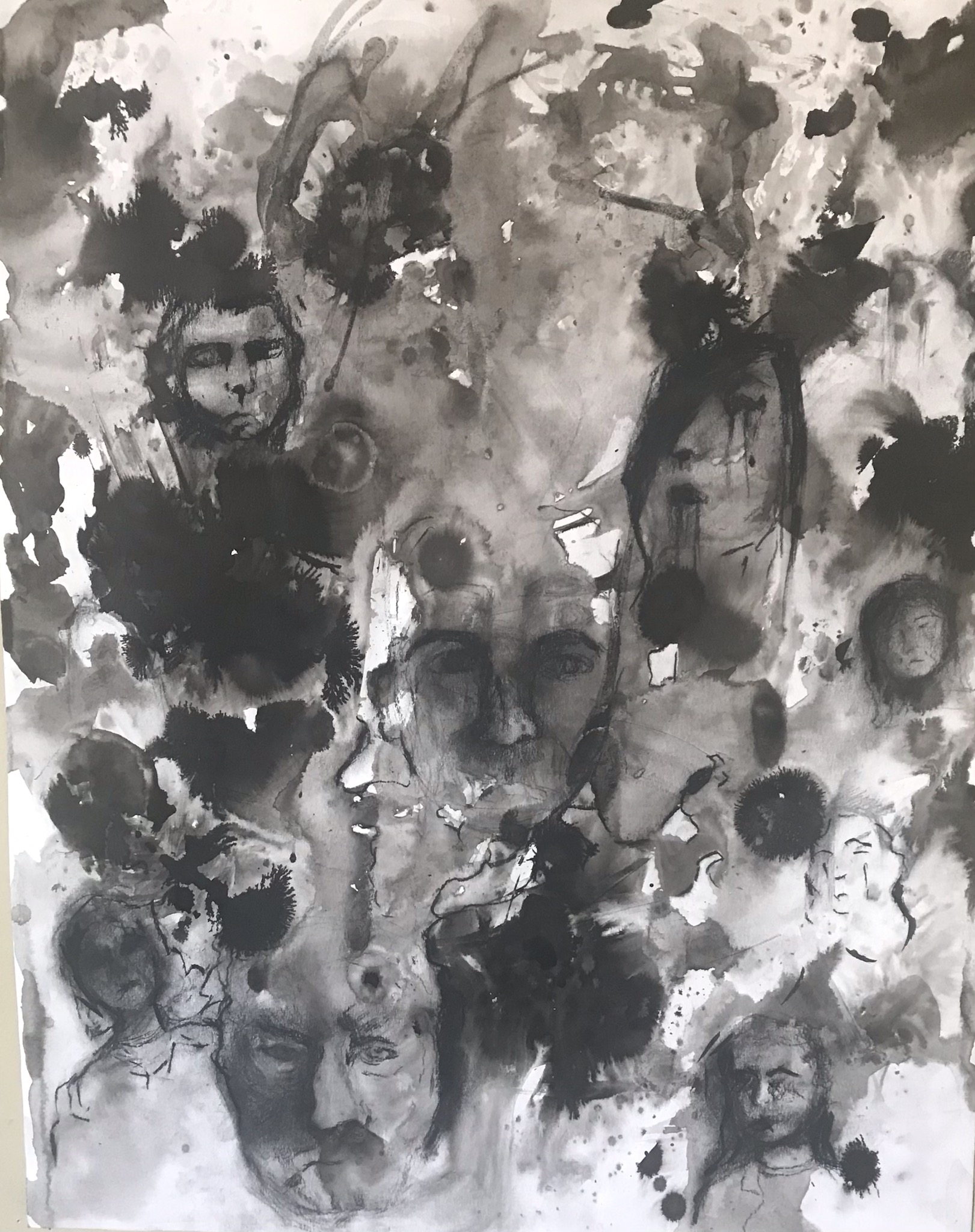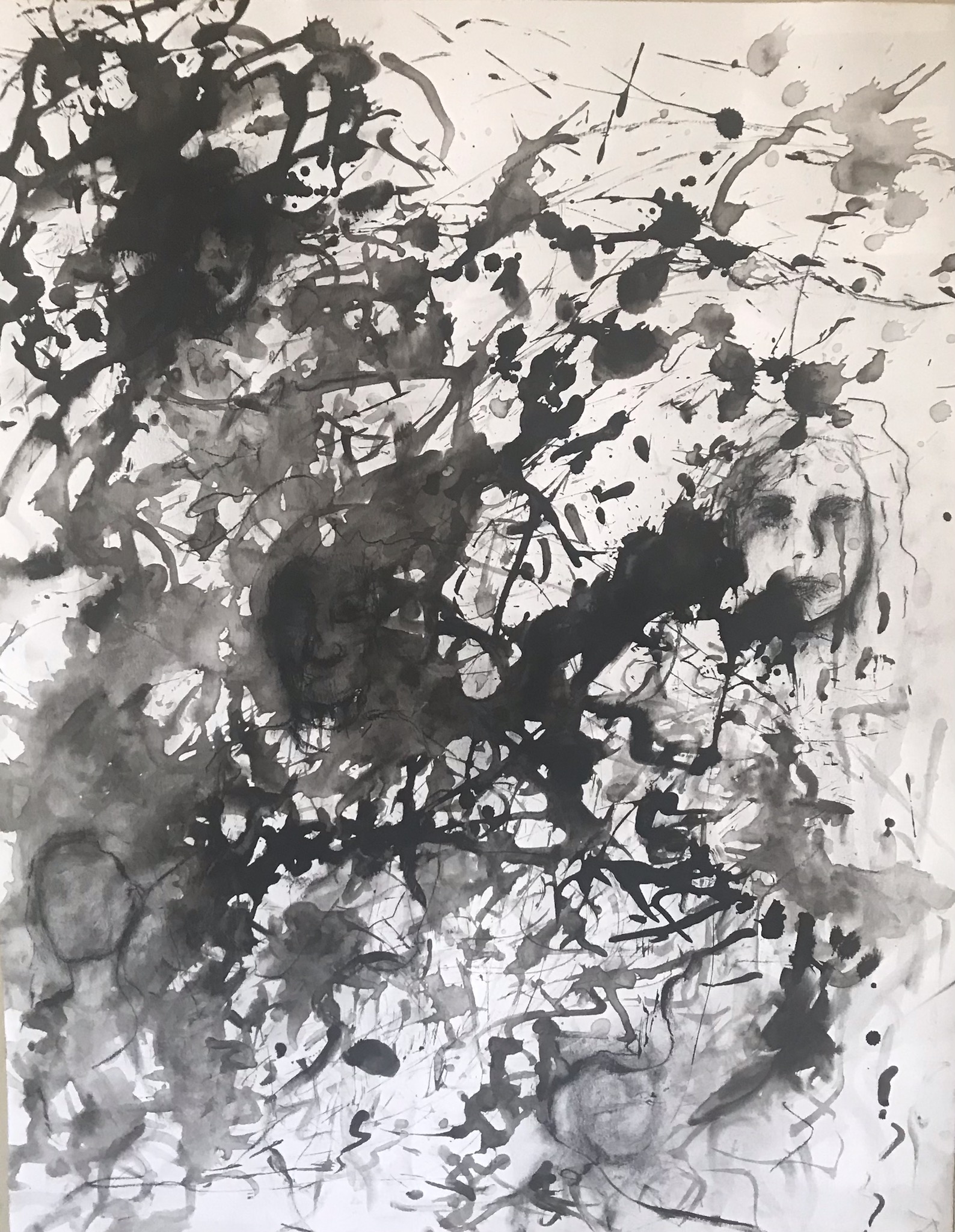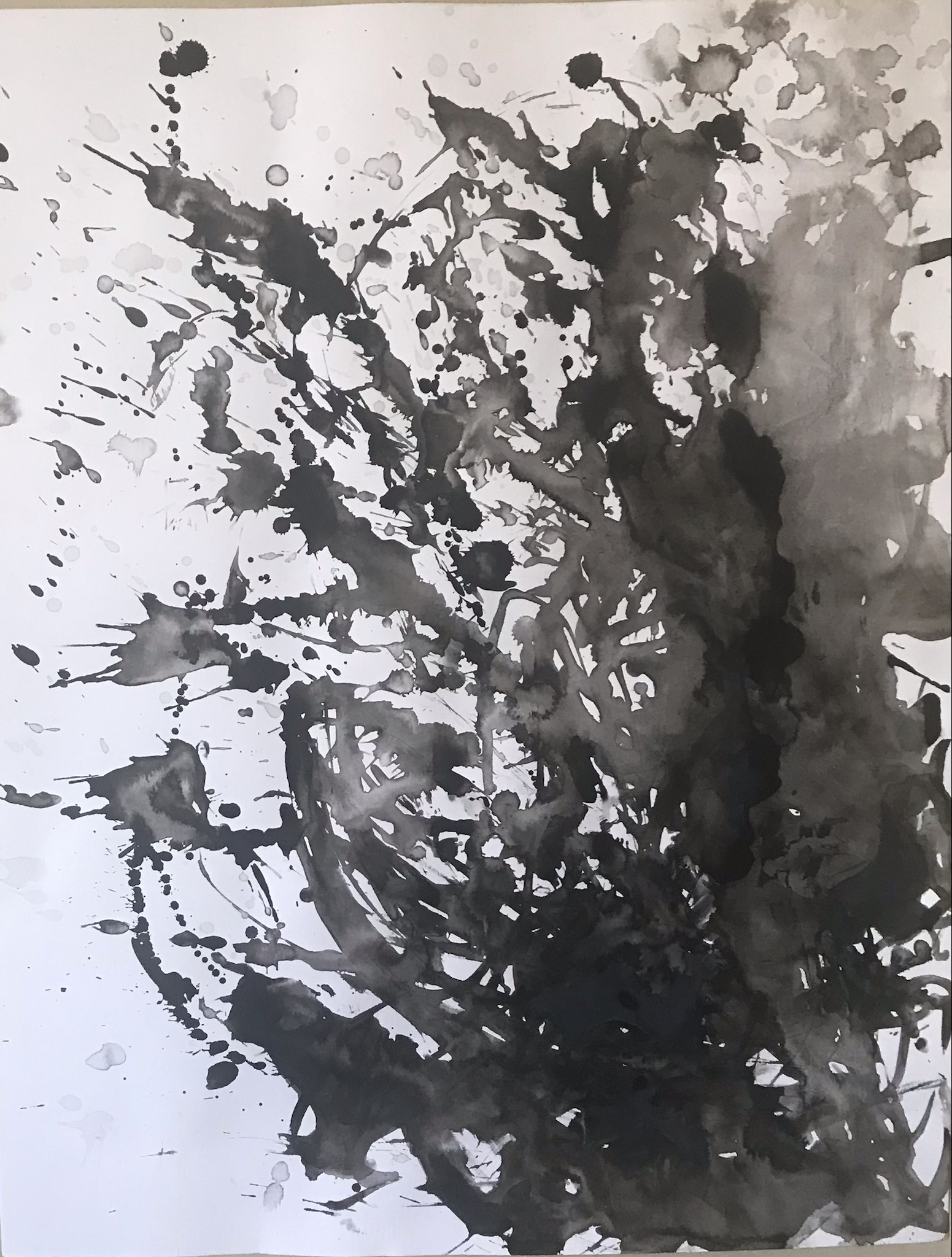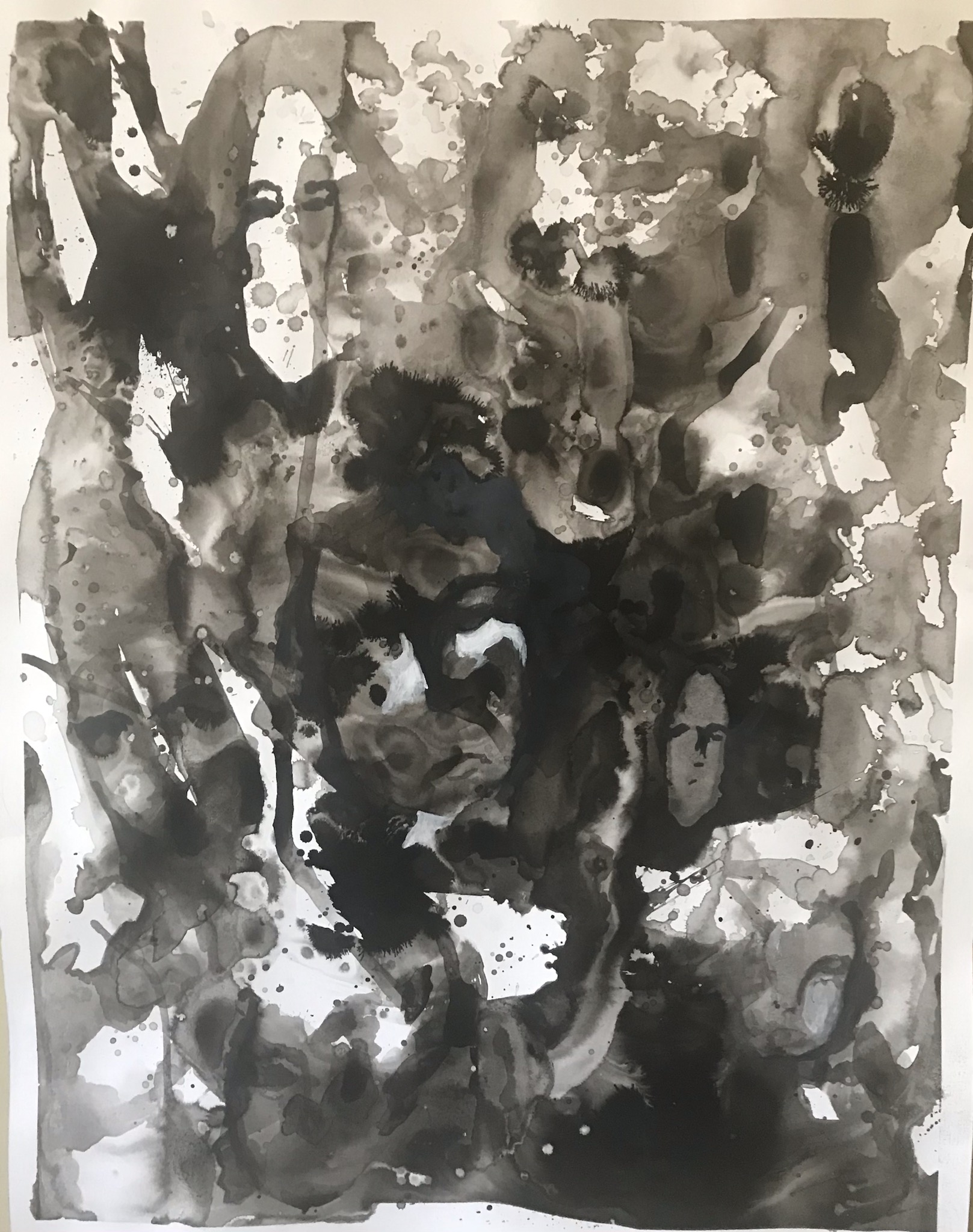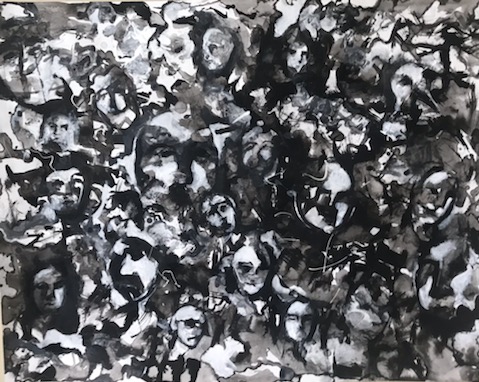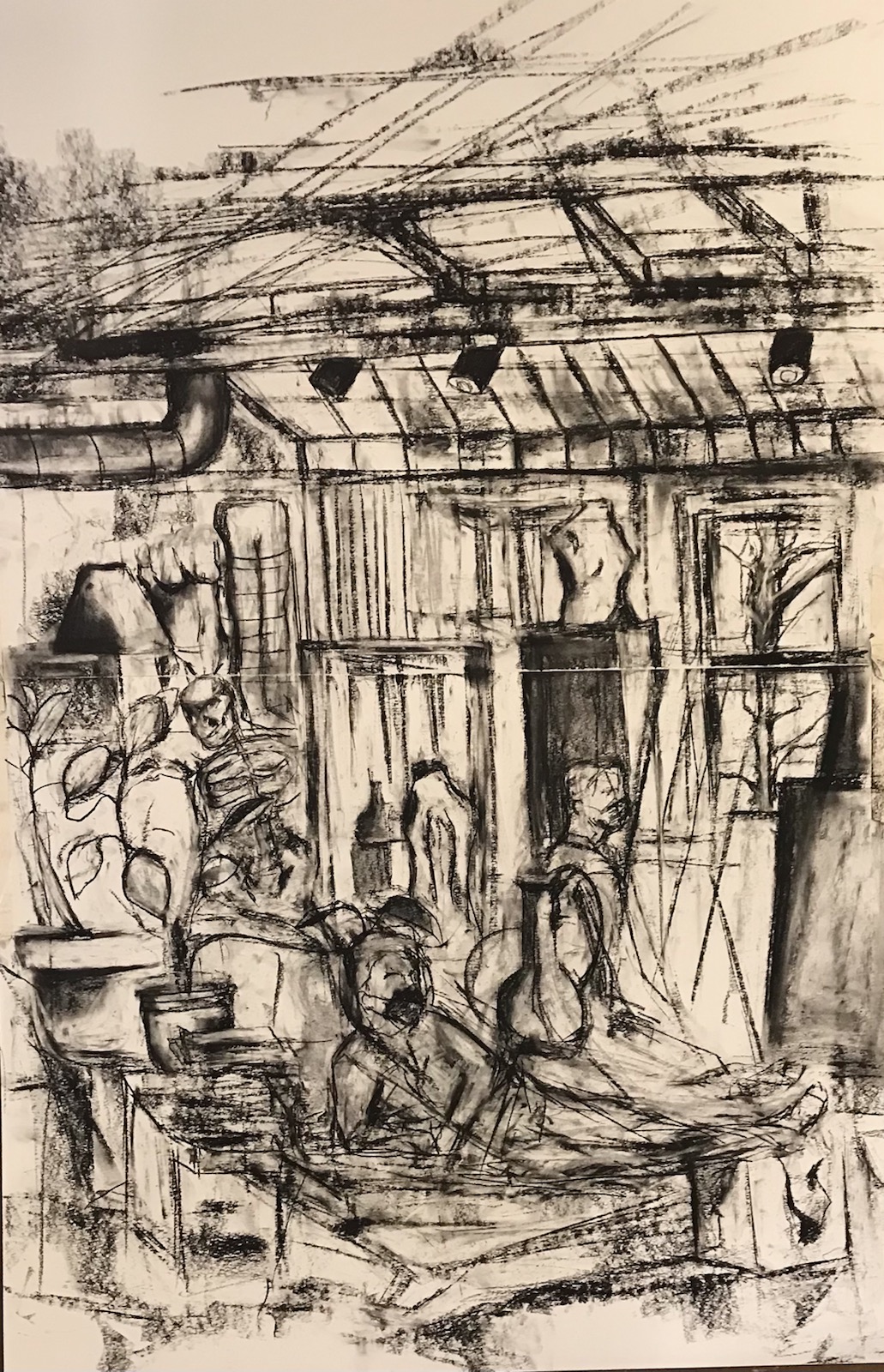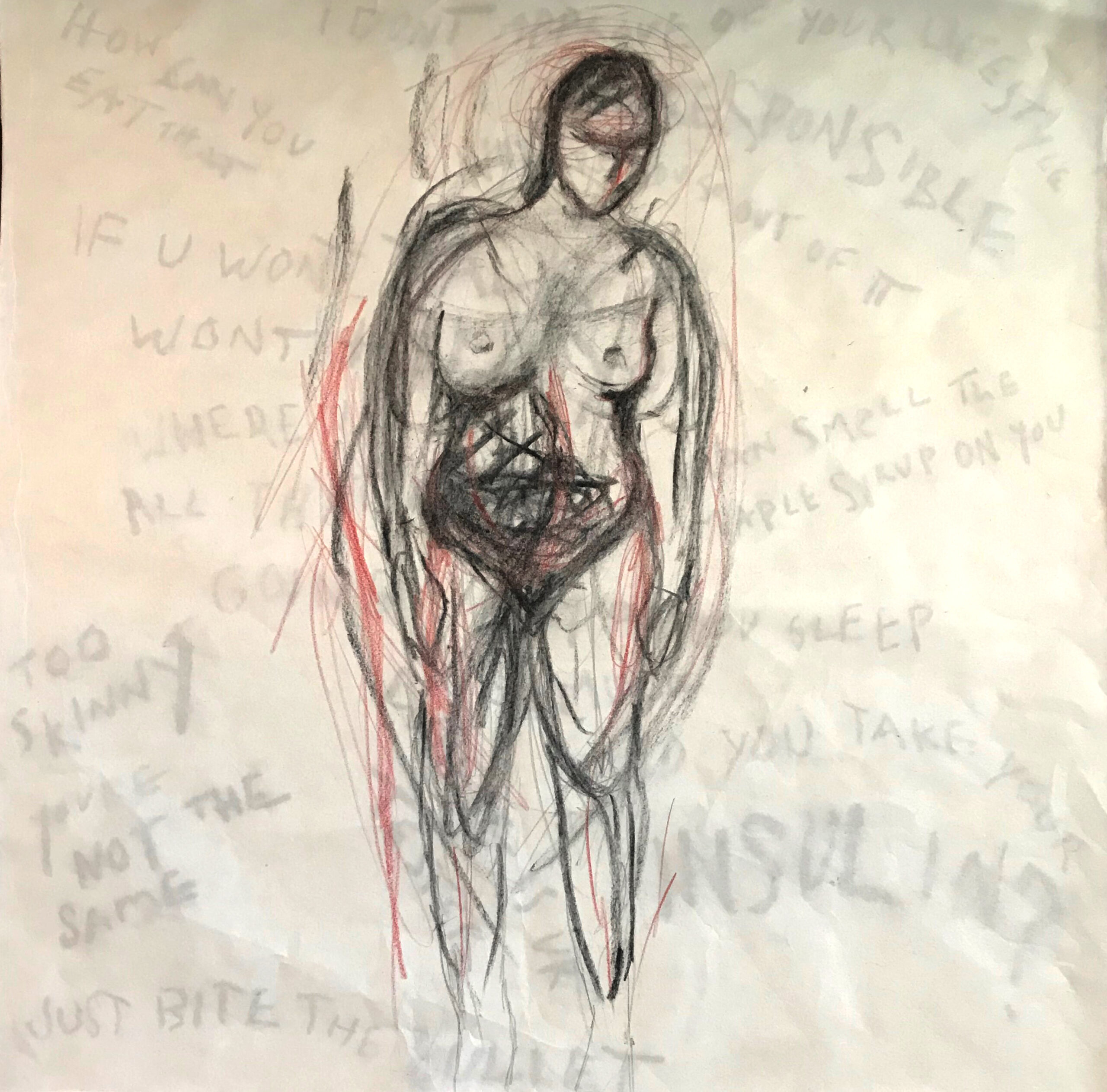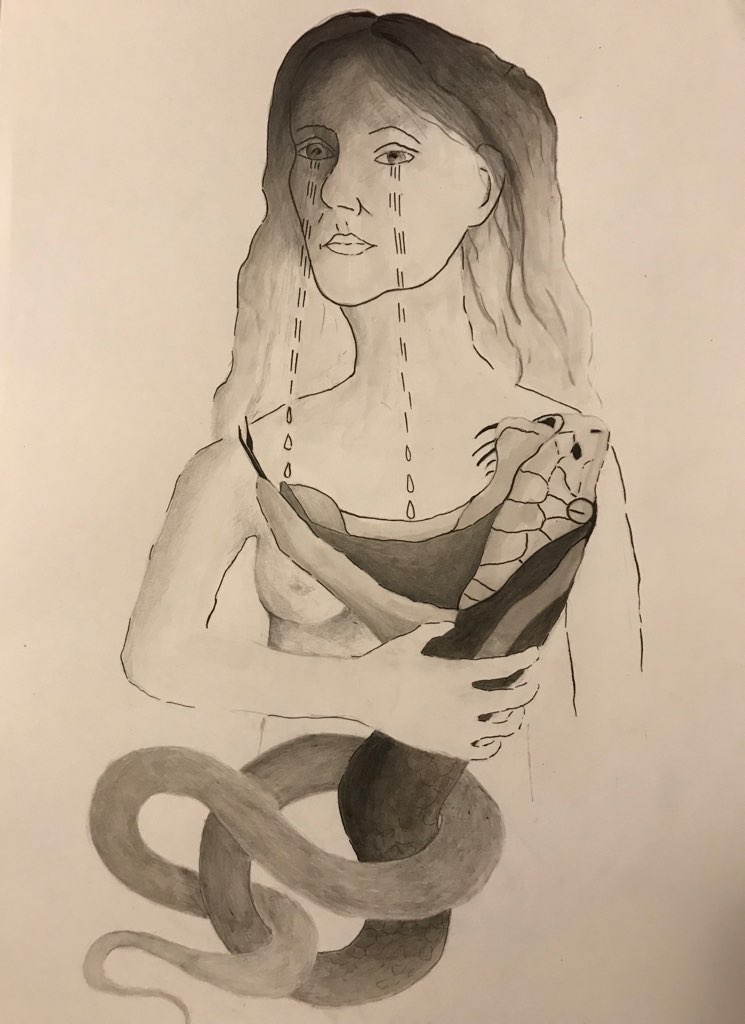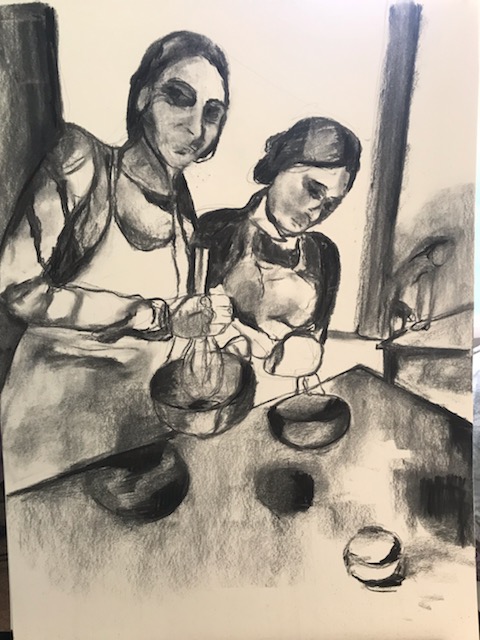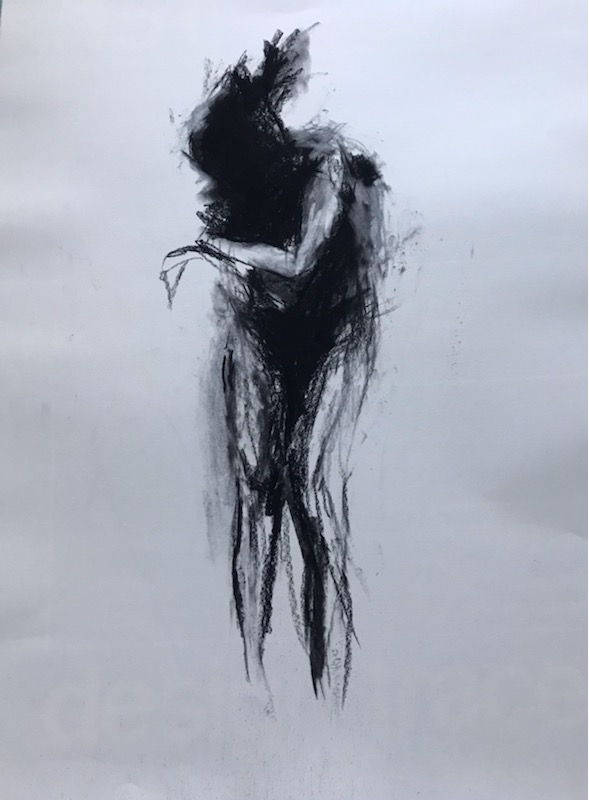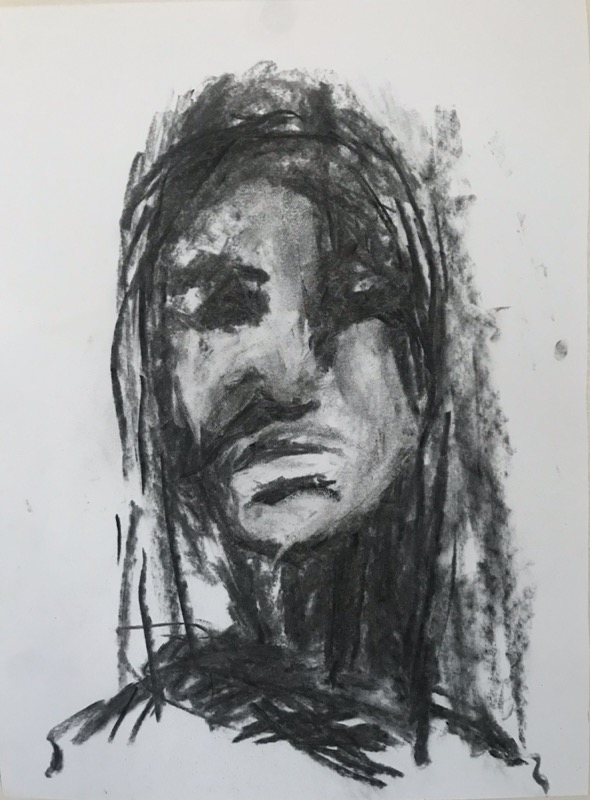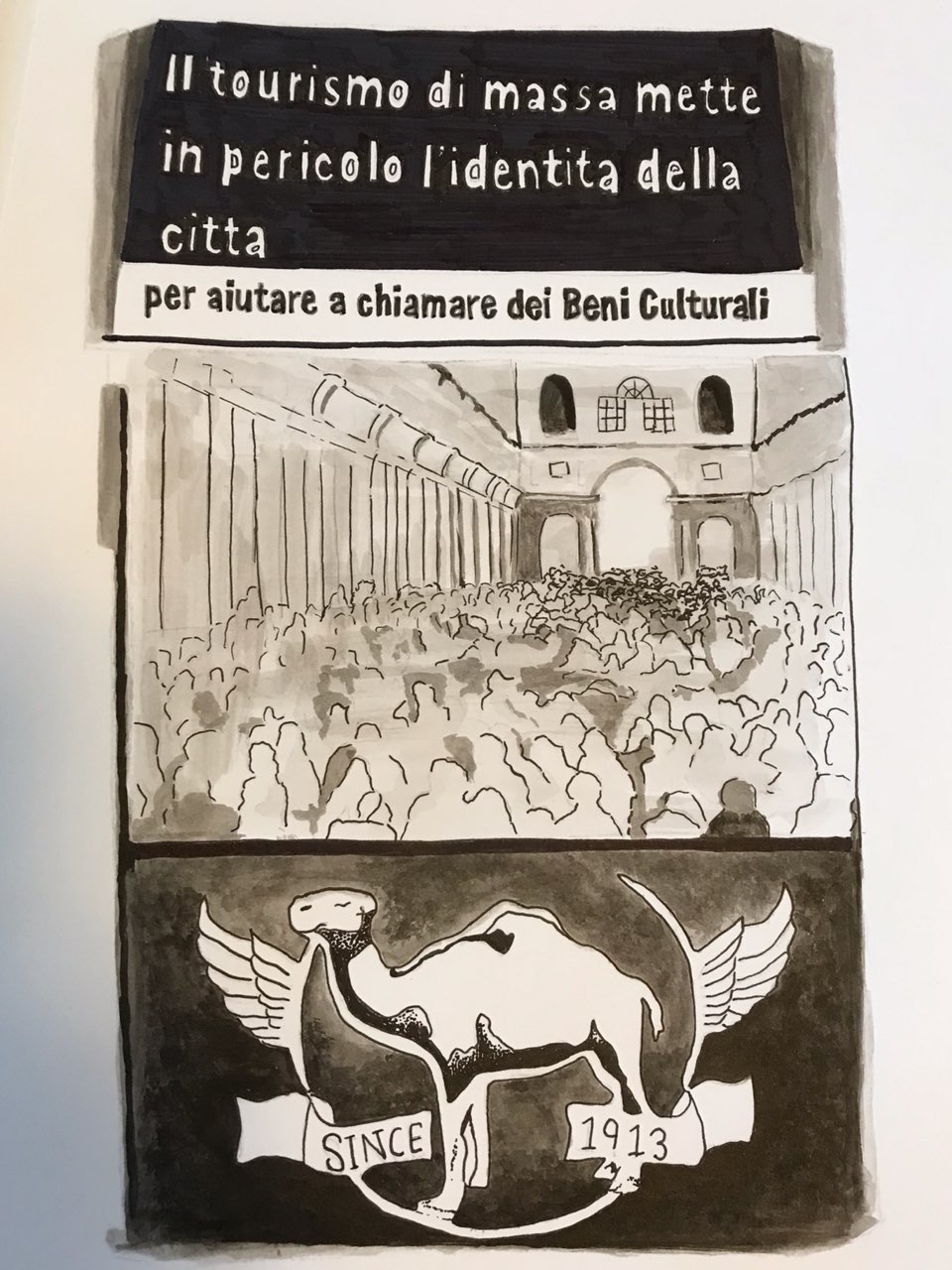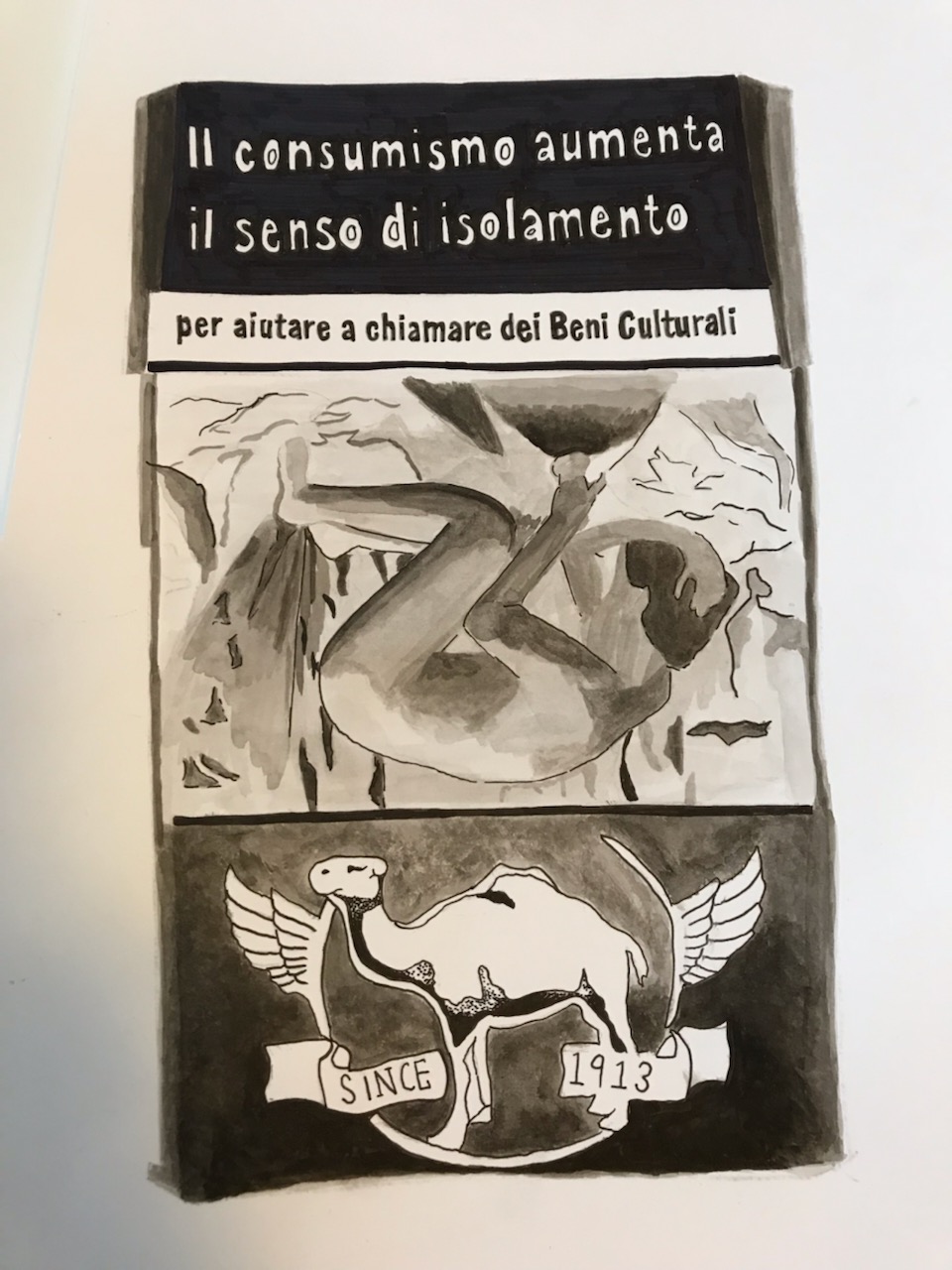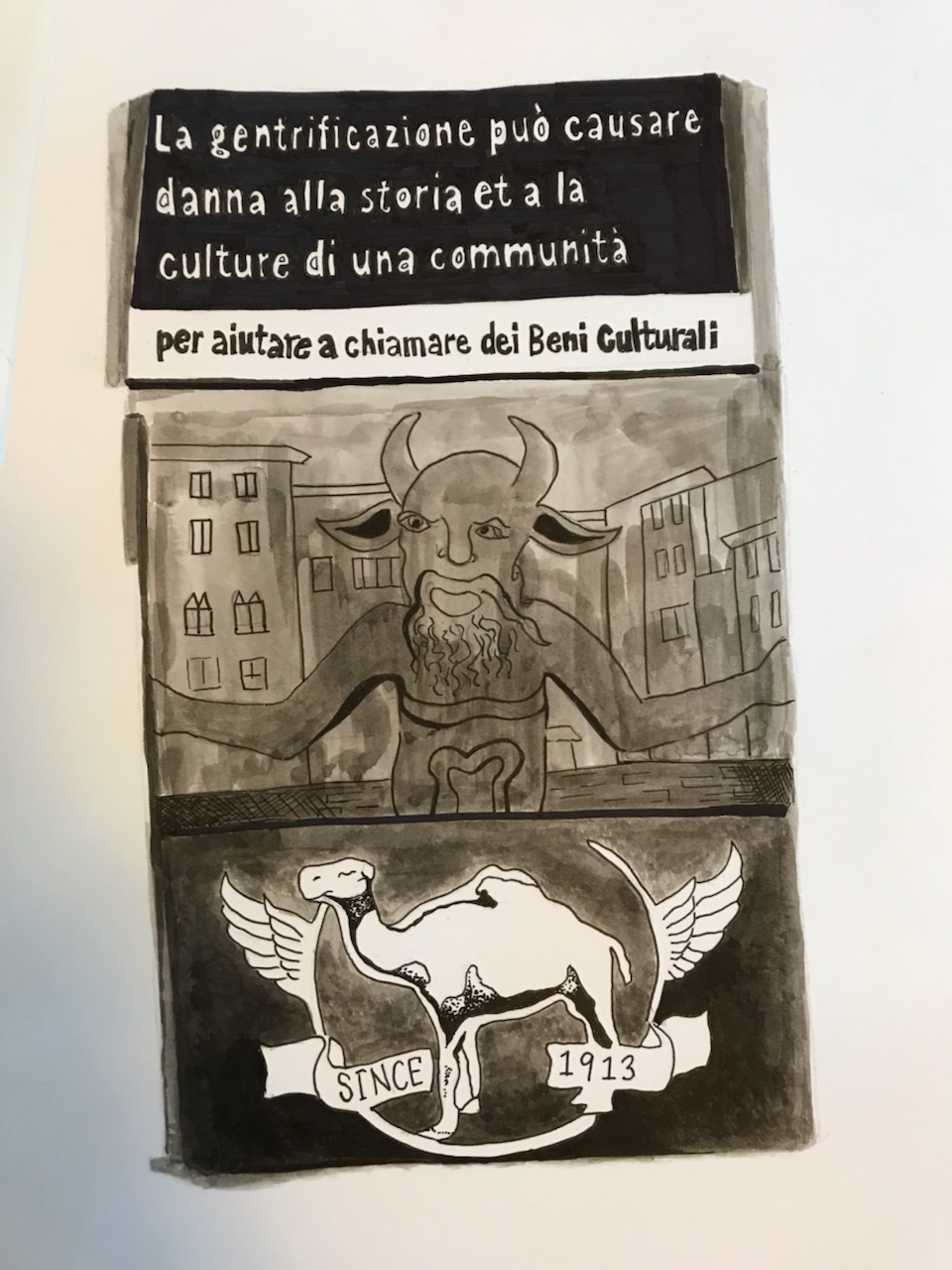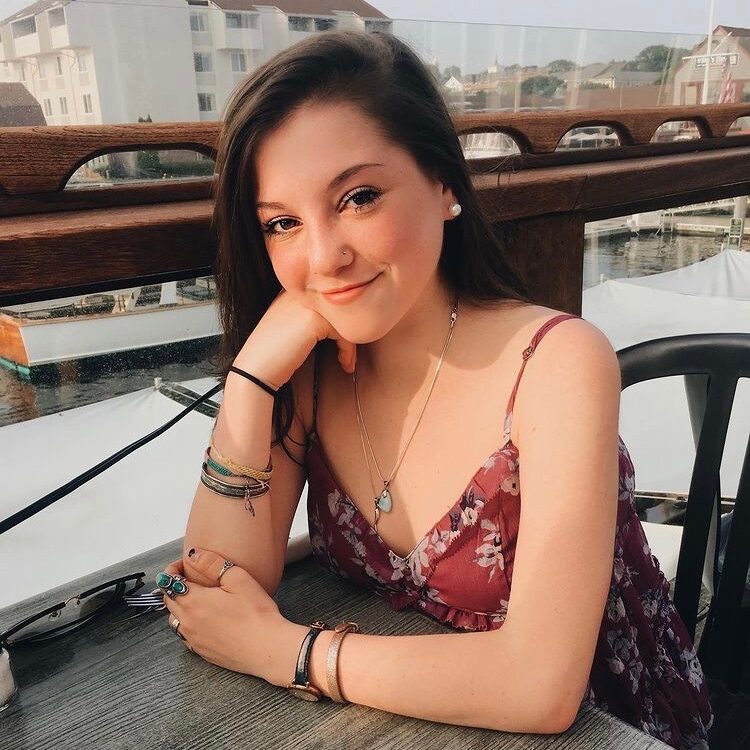
Sarah Carbonara
When I first came to UNH, I was controlled by the thought that my work must be a precise replication of the environment around me. The beginning of each piece had to start without flaw and somehow meld into the perfect drawing. This ideology stunted my work and didn’t allow for any exploration or self-discovery as an artist. I felt that the work I wanted to create was always almost in my grasp, but never fully realized. My recent work at UNH has focused on counteracting that.
I finally gained the insight that to destroy, eliminate, dismantle, and mutilate my drawings would allow for reconstruction into a fully resolved piece. I let go of all my expectations and allowed the work to create itself. I did this by using multiple methods to manipulate an initial layer of ink on each page. Sometimes I started slowly and deliberately, other times I destroyed the paper in chaotic bursts of motion. I then worked on top with charcoal, white gesso, and more ink. I wanted my work to never feel fully finished or unfinished, leaving the door open to more destruction and/or reconstruction.
This body of work stems from a previous series I created about my chronic illness and a subsequent eating disorder. I focused on how my fear and worry displayed themselves – shame, avoidance, sadness, and anxiety. This succeeding series has focused on developing my own language to describe the complexity of worry I have observed in my family. After suffering for eight years, I recognized how worry presented itself differently in each one of my family members: control, disassociation, anger, exasperation, sadness, and judgment. My work is intended to describe these feelings with chaotic, instinctive, and aggressive marks. In some pieces, I coupled this with slow, controlled drawings in charcoal to emphasize the polarity of emotions we feel simultaneously.
I found inspiration in the artist (although controversial)Jackson Pollock who stated, “I have no fear of making changes, destroying the image, etc. because the painting has a life of its own.”These words gave me the power to release any assumptions about what each piece should be, and work without apprehension. Additionally, I found great inspiration from my peers in my studio courses. Throughout my four years here, I have watched them grow and come into their own. Their work has inspired me to challenge myself, and look at things through a different lens whether that be through tone, composition, abstraction, line work, etc.

